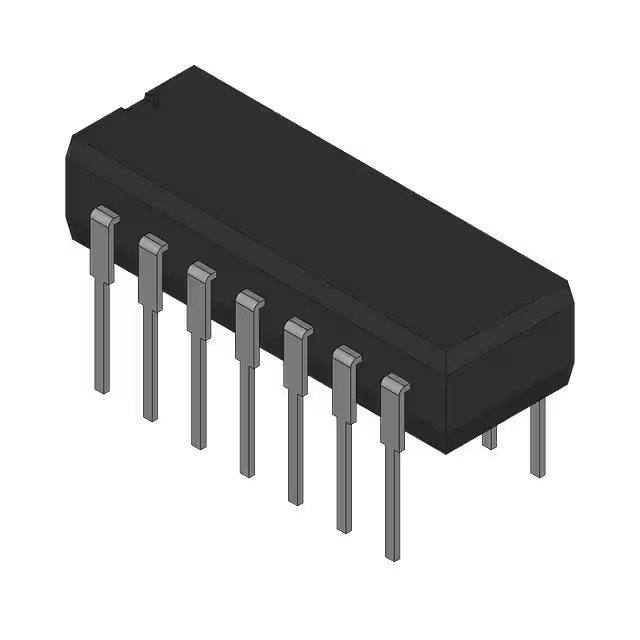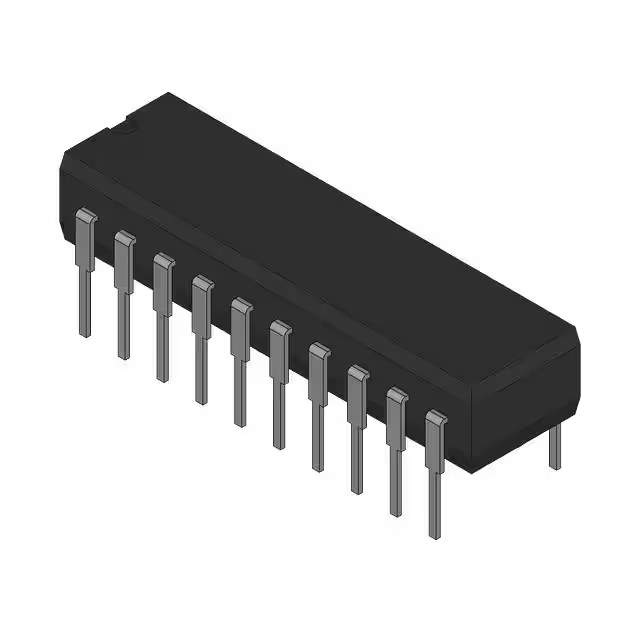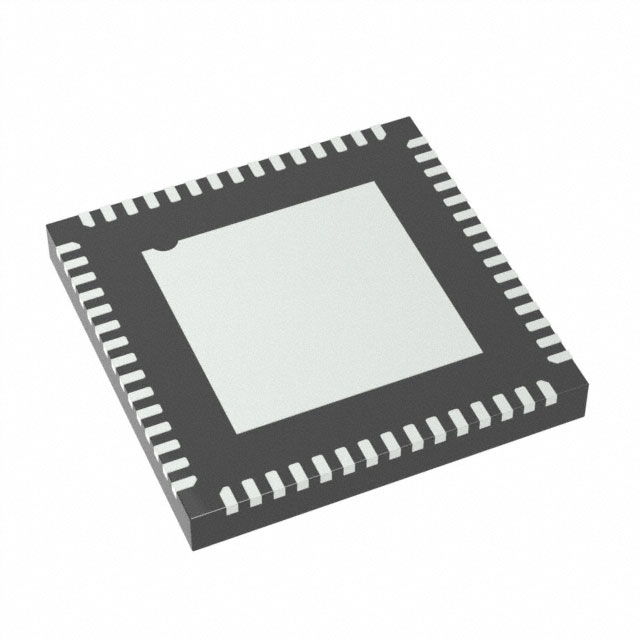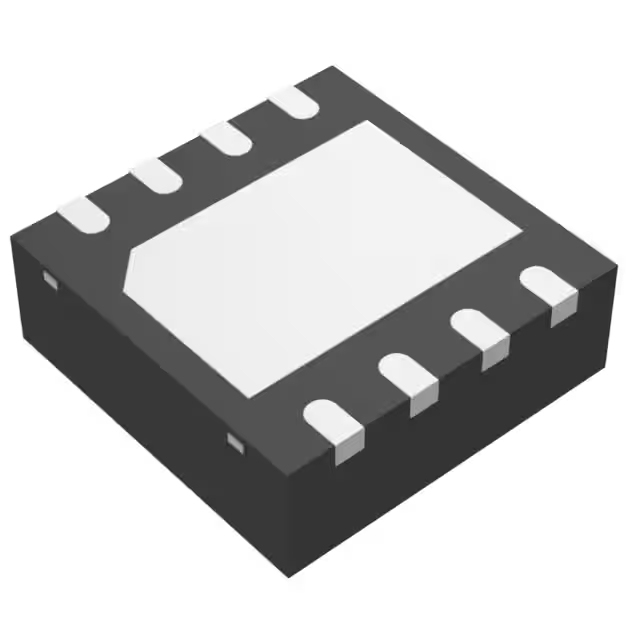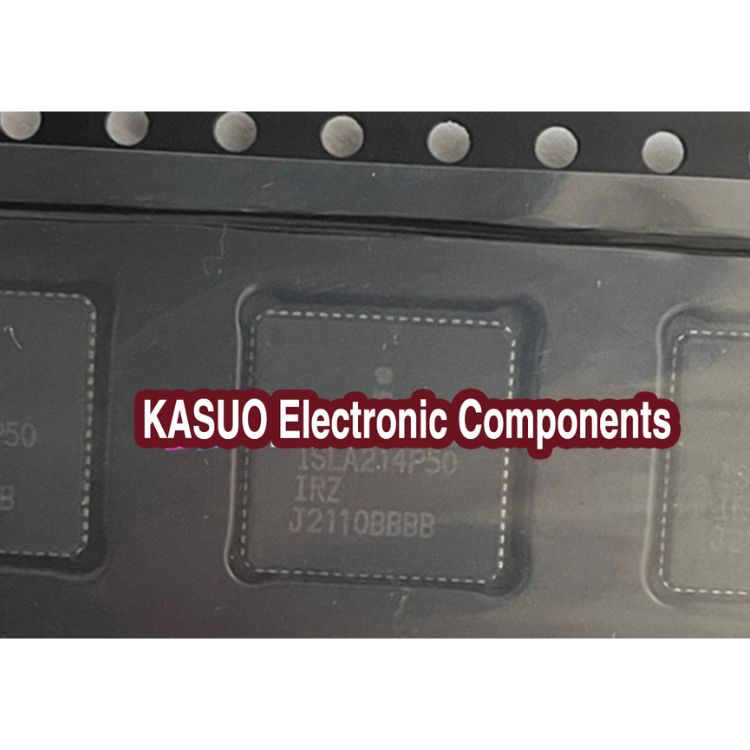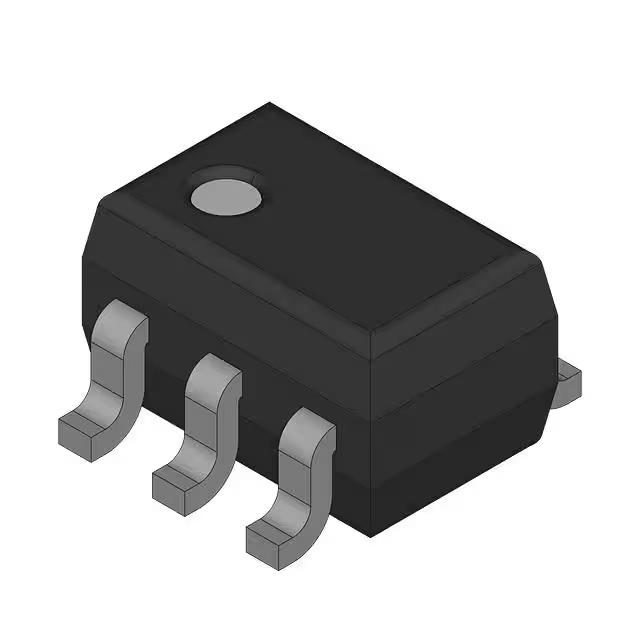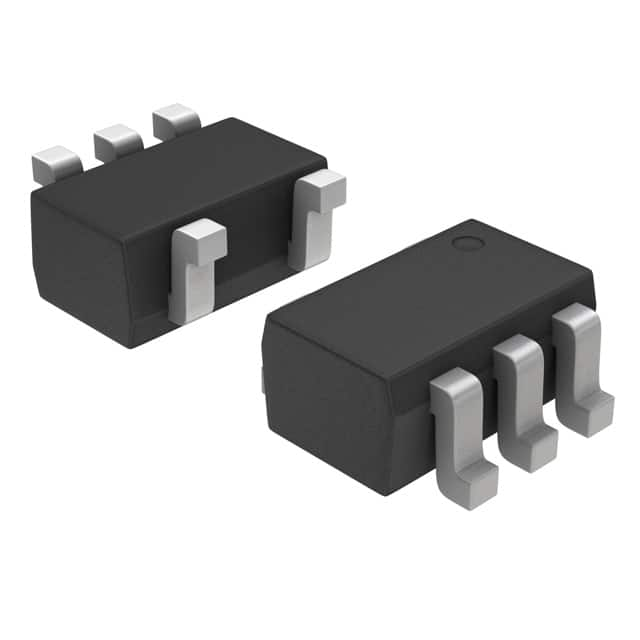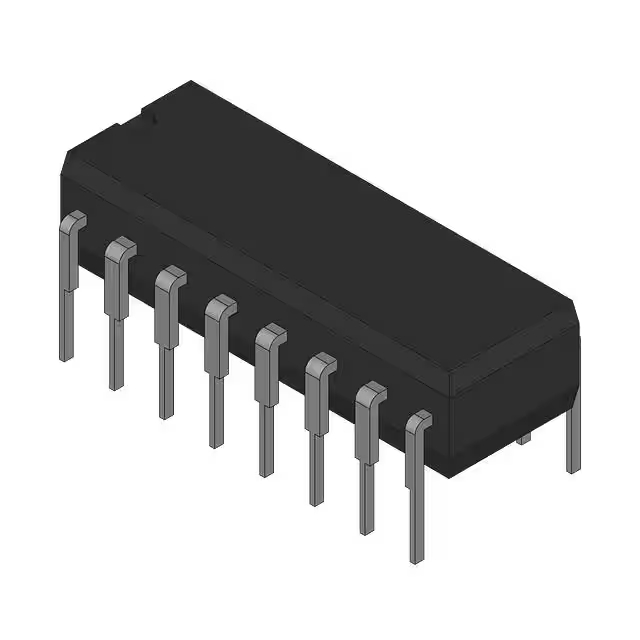CH340T Driver, Datasheet & USB to Serial Chip
- Brands: WCH(Jiangsu Qin Heng)
- Download: -
- Price: inquiry
- In Stock: 21754
- Voltage - Supply: 3.3V
- Applications Function: Transceiver
- Protocol: USB 2.0
- Package: SSOP-20-209mil

FREE delivery for orders over HK$250.00

Quick response, quick quotaton

Flash shipment,no worries after sales

Original channel,guarantee of the authentic products
DIY Project StarterElectronic KIY Kit /ArduinoIDE UNO R3 Ch340
Ch340t
If you’re looking for a simple way to connect USB to UART, the CH340T chip is your friend. It’s a reliable and cost-effective USB-to-serial converter, perfect for projects involving microcontrollers like Arduino or other embedded devices. It supports USB 2.0 full-speed transfers at speeds up to 12 Mbps, making data transfers fast and stable.
You’ll appreciate how few external components it needs—just a crystal and a handful of capacitors and resistors, keeping your circuit neat and easy to build. It handles both 3.3V and 5V logic, so double-check your device’s voltage before hooking things up.
The CH340T is tiny, packaged in an SOP-16, great for compact designs. Drivers are readily available for Windows, Linux, and macOS, making setup straightforward.
Just remember to keep your PCB layout tight around the chip and avoid long USB cables, as shorter distances help maintain stable communication. Also, stick to a stable 5V power supply to keep your connection rock-solid.
Ch340t Pinout
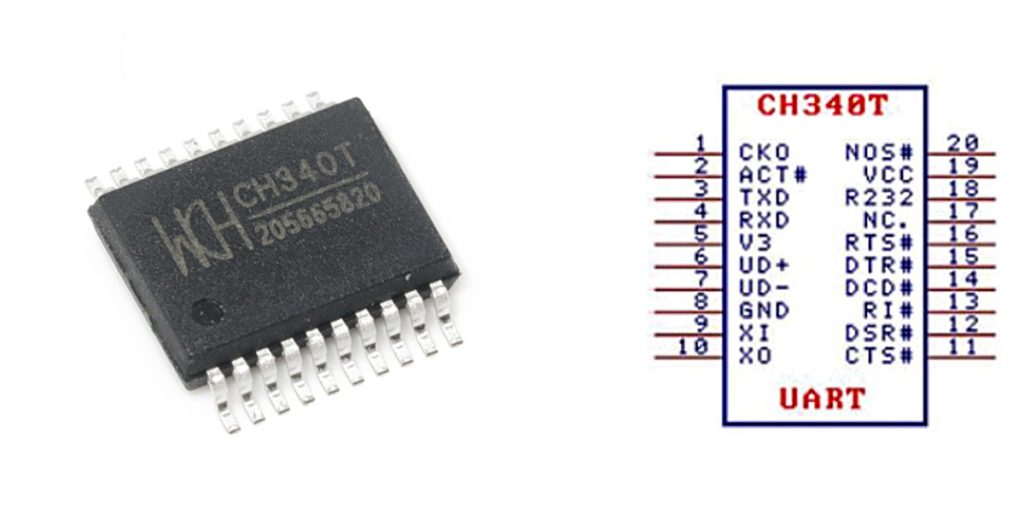
| Pin Number | Pin Name | Description |
|---|---|---|
| 1 | CKO | Clock Output Pin |
| 2 | ACT# | USB Activity Indicator (Active Low) |
| 3 | TXD | UART Transmit Data |
| 4 | RXD | UART Receive Data |
| 5 | V3 | 3.3V Regulated Voltage Output |
| 6 | UD+ | USB Data Line Positive (D+) |
| 7 | UD- | USB Data Line Negative (D-) |
| 8 | GND | Ground |
| 9 | XI | Crystal Oscillator Input |
| 10 | XO | Crystal Oscillator Output |
| 11 | CTS# | Clear to Send Input (Flow Control) |
| 12 | DSR# | Data Set Ready Input (Flow Control) |
| 13 | RI# | Ring Indicator Input (Modem Signal) |
| 14 | DCD# | Data Carrier Detect Input (Modem) |
| 15 | DTR# | Data Terminal Ready Output (Flow Control) |
| 16 | RTS# | Request to Send Output (Flow Control) |
| 17 | TNOW | Transmit Status Indicator Output |
| 18 | R232 | RS232 Mode Enable Control |
| 19 | VCC | 5V Power Supply Input |
| 20 | NOS# | Unused (Floating or Grounded) |
When you’re working with the SSOP-20 package, double-check the pin definitions—they differ from the standard SOP-16, and mixing them up can cause headaches. For the crystal pins (XI/XO), always use a 12MHz crystal paired with around 22pF capacitors to keep your signals clean and reliable. Stick with a stable 5V for VCC, and don’t draw more than 30mA from the internal 3.3V pin. Keep USB data lines (UD+, UD-) close to your USB connector to reduce noise. If you’re not using flow-control pins (CTS#, RTS#), just leave them floating or pull them up to VCC to improve your circuit’s resistance to interference.
Ch340t Equivalent

| Parameter | CH340T | CH340R | FT232RL | PL2303TA |
|---|---|---|---|---|
| Package Type | SSOP-20 | SSOP-20 | SSOP-28 | SSOP-28 |
| External Crystal Oscillator | Required (12MHz) | Required (12MHz) | Required (12MHz) | Required (12MHz) |
| Internal Crystal Oscillator | None | None | None | None |
| Power Supply Voltage | 3.3V / 5V | 3.3V / 5V | 3.3V / 5V | 3.3V / 5V |
| Supported Serial Signals | RTS, DTR, CTS, etc. | RTS, DTR, CTS, etc. | RTS, DTR, CTS, etc. | RTS, DTR, CTS, etc. |
| Additional Features | None | Supports IrDA infrared communication | EEPROM configurable | Compatible with various operating systems |
| Driver Compatibility | Compatible with CH341 driver | Compatible with CH341 driver | Official driver support | Official driver support |
| Application Scenarios | General USB to serial communication | Applications requiring IrDA infrared communication | Applications demanding high reliability | General USB to serial communication |
When you’re considering swapping out a CH340T USB-to-serial chip, there are a few things you need to keep in mind. If you’re looking for an easy drop-in replacement, the CH340R is perfect because it uses the exact same SSOP-20 package—no PCB redesign needed. Plus, CH340R adds infrared (IrDA) communication support, handy if your project might need that.
But if you’re eyeing the FT232RL or PL2303TA chips, watch out—they use an SSOP-28 package, so you’ll have to redesign your PCB layout. FT232RL offers built-in EEPROM for flexible serial settings, great for projects needing high reliability. Meanwhile, PL2303TA is popular because its drivers work smoothly across Windows, Linux, and MacOS.
Make sure your existing circuit has the necessary 12MHz crystal oscillator and capacitors. Always double-check the pin functions carefully before making any replacements, and test driver compatibility early—this way you’ll avoid headaches later, especially if your application demands stability and speed.
Ch340t Usb To Ttl Circuit Example

This circuit uses the CH340T chip to easily convert USB signals into TTL serial communication, perfect for connecting your Arduino or microcontroller to a computer. To power it properly, make sure you’re feeding it a stable 5V and use a 10uF capacitor (C4) to smooth things out. Keep the USB data lines (D+ and D-) close to the chip, adding a 0.1uF capacitor (C3) to reduce noise. Your 12MHz crystal (Y1) should have matching capacitors (20pF each) for accurate timing. Don’t mix up your USB wires, and ensure your TTL levels match your device (typically 5V). Unused pins can stay floating or internally handled.
Ch340t Vs Ch340g Differences
| Parameter | CH340T | CH340G |
|---|---|---|
| Package Type | SOP-16, SSOP-20 | SOP-16 |
| USB Interface Type | USB 2.0 Full-Speed | USB 2.0 Full-Speed |
| UART Communication Speed | Up to 2 Mbps | Up to 2 Mbps |
| Flow Control Pins | Multiple (RTS, CTS, DSR, DTR, DCD, RI) | Fewer (RTS, CTS) |
| Dedicated RS232 Pins | Provided (Pin R232) | None |
| 3.3V Regulated Output Current | Max 30mA | Max 25mA |
| Crystal Oscillator | External 12MHz | External 12MHz |
| Power Supply Voltage | 5V | 5V |
| Driver Support | Windows/Linux/macOS | Windows/Linux/macOS |
| Applications | Complete UART Communication and Debugging Functionality | Basic USB to TTL Serial Functionality |
When swapping between the CH340T and CH340G chips, remember they’re not exactly the same. The CH340T offers extra pins for things like flow control and RS232 features, while the CH340G sticks to basic serial communication. If your setup doesn’t use those extra features, you’ll probably be fine swapping them directly, but always double-check. Another thing to watch out for is the different packages: CH340T uses an SSOP-20, and CH340G an SOP-16, so you might need a new PCB layout. Lastly, the CH340T gives a slightly stronger 3.3V output (30mA versus 25mA), handy if your circuit needs that little extra juice.
Ch340t Arduino Usb Communication
If you’re building Arduino projects, you’ll often use a CH340T chip for USB-to-serial communication. It lets your Arduino (like an UNO or Nano) easily talk to your computer via USB, whether you’re uploading code or checking serial output. Connect the CH340T’s TX pin to Arduino’s RX pin and vice versa—this crossover is crucial. Make sure your crystal oscillator is 12MHz with a couple of 22pF capacitors for stability. Install CH340 drivers if you’re on Windows; macOS and Linux usually recognize it automatically. Use a good-quality, short USB cable, set your baud rate in Arduino IDE (9600 or 115200), and you’ll be ready to go!
Ch340t Usb Interface For Microcontroller
If you’re using microcontrollers like Arduino, AVR, STM32, or 8051, you’ll probably come across the CH340T chip. It’s a handy little USB-to-TTL converter that lets your microcontroller easily communicate with your PC via USB. Just connect CH340T’s TX to your MCU’s RX and vice versa. Use a stable 5V power supply and don’t forget the external 12MHz crystal with 22pF capacitors for clear communication. Install CH340 drivers on Windows (Mac/Linux usually work right away). Set your UART speed, commonly 115200bps, and you’re good to go—ideal for programming your board, debugging, or real-time data transfers.
Ch340t Linux Serial Port Setup
When you’re using a CH340T USB device on Linux, first plug it in and quickly run commands like dmesg | grep tty or ls /dev/ttyUSB* in your terminal to check if the system sees it—usually, you’ll see it appear as something like /dev/ttyUSB0. Linux usually recognizes CH340T chips without extra drivers if you’re running kernel version 2.6.24 or newer. But if nothing shows up, you can try manually loading the driver with sudo modprobe ch341.
By default, Linux restricts serial ports to root users. So, if you’re having permission issues, quickly fix it by running sudo chmod 666 /dev/ttyUSB0 for temporary access or add yourself permanently to the dialout group with sudo usermod -aG dialout $USER—just don’t forget to log out and log back in afterward.
To test communication, install handy tools like minicom (sudo apt install minicom) or screen (sudo apt install screen) and connect at 115200 baud. And if you get weird characters or no response, double-check the baud rate and your cable connections.







